-
History & Society
- Education in Pre-war Hong Kong
- History of Taikoo Sugar Refinery
- Hong Kong Products Exhibition
- Local Festivals Around the Year
- Post-war Industries
- Pre-war Industry
- The Hong Kong Jockey Club Archives
- Tin Hau Festival
- Memories We Share: Hong Kong in the 1960s and 1970s
- History in Miniature: The 150th Anniversary of Stamp Issuance in Hong Kong
- A Partnership with the People: KAAA and Post-war Agricultural Hong Kong
- The Oral Legacies (I) - Intangible Cultural Heritage of Hong Kong
- Hong Kong Currency
- Hong Kong, Benevolent City: Tung Wah and the Growth of Chinese Communities
- The Oral Legacies Series II: the Representative List of the Intangible Cultural Heritage of Hong Kong
- Braving the Storm: Hong Kong under Japanese Occupation
- A Century of Fashion: Hong Kong Cheongsam Story
Geography & EnvironmentArt & Culture- Calendar Posters of Kwan Wai-nung
- Festival of Hong Kong
- Ho Sau: Poetic Photography of Daily Life
- Hong Kong Cemetery
- Sketches by Kong Kai-ming
- The Culture of Bamboo Scaffolding
- The Legend of Silk and Wood: A Hong Kong Qin Story
- Journeys of Leung Ping Kwan
- From Soya Bean Milk To Pu'er Tea
- Applauding Hong Kong Pop Legend: Roman Tam
- 他 FASHION 傳奇 EDDIE LAU 她 IMAGE 百變 劉培基
- A Eulogy of Hong Kong Landscape in Painting: The Art of Huang Bore
- Imprint of the Heart: Artistic Journey of Huang Xinbo
- Porcelain and Painting
- A Voice for the Ages, a Master of his Art – A Tribute to Lam Kar Sing
- Memories of Renowned Lyricist: Richard Lam Chun Keung's Manuscripts
- Seal Carving in Lingnan
- Literary Giant - Jin Yong and Louis Cha
Communication & Media- Hong Kong Historical Postcards
- Shaw Brothers’ Movies
- Transcending Space and Time – Early Cinematic Experience of Hong Kong
- Remembrance of the Avant-Garde: Archival Camera Collection
- Down Memory Lane: Movie Theatres of the Olden Days
- 90 Years of Public Service Broadcasting in Hong Kong
- Multifarious Arrays of Weaponry in Hong Kong Cinema
-
History & SocietyGeography & EnvironmentArt & Culture
-
View Oral History RecordsFeatured StoriesAbout Hong Kong Voices
-
Hong Kong Memory
- Collection
- All Items
- Second Generation Industrialists
Recently VisitedSecond Generation Industrialists
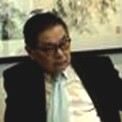
- Paul Lam's academic background, work experience in professional chemistry and his succession of T...
After Paul Lam graduated from university, he had worked oversea for seven years. During that period of time, The China Paint Manufacturing Company had planned to take over a joint venture in Singapore, to improve the unsatisfactory performance of the company. Lam Kwan and Lam On invited Paul Lam to manage the company in Singapore. In arriving at Singapore, he found that the business was not a good investment, he decided to forgo the take-over and returned to Hong Kong. Although paint industry is one kind of chemical industry, Paul Lam considered himself know little about paint. Initially he had no intention to stay and work for the company. Not long afterwards, Lam Kwan died of heart disease. Paul Lam had worked in Hong Kong for less than a year and then returned to his previous employer in the United States. Under the urge of the family, he eventually returned to Hong Kong to help with the family business.
The Lam’s family used to respect the individual interests and initiatives of the younger generation and seldom imposed pressure to the descendants to inherit the family business. For example, all the children of Paul Lam did not major in science specialties and he didn’t plan to arrange his children to be successors.
Paul Lam had studied in La Salle College and then changed to Diocesan Boys' School at Form 2, where he studied until graduation. Since his parents had little knowledge about studying abroad, Paul Lam himself gathered information from his teacher and sent out an application to The University of California, Berkeley. He was admitted and left for Berkeley in early 1962. There were a good number of graduates from Diocesan Boys’ School to study abroad.
Paul Lam did not have particular expectation about his future after graduation. He had a lot of interests and activities and work was only one of his concerns. At that time it was not difficult for one to find a living in the United States. Therefore, Paul Lam did not worry about his career future. Upon graduation, he joined the Specialty Gas industry, which was a challenging industry that provided him with great satisfaction. He witnessed the rapid growth of the electronics industry in the 1970s. At that time, electronic companies like Pioneer and Dupin applied a special poisonous gas rather than atomic particles to produce chips for the brands’ circuit boards.
The company he worked for was a material supplier for electronic companies. In 1969, his company supplied the disinfection gas to the American astronaut Armstrong when he returned to the Earth after landing on the Moon. It was common for the American hospitals to use the same disinfection gas. In 1970s, he was relocated to Los Angeles, a city which was faced with serious air pollution. His company provided gas for General Motor to detect the gas exhaustion level. His company also produced heavy water, a material for producing atomic bomb. The production of atomic bomb was a dangerous industry as carbon monoxide was emitted as a by-product. When he was the Chemist of the company, Paul Lam had witnessed explosion in the company. Therefore Paul Lam was experienced in managing accidents and hazards in the paint industry. Back in the U.S., Pau Lam was promoted to branch manager since he showed good performance in handling an accident caused by hydrogen chloride in the Intel Corporation. He was then the youngest and the only expatriate branch manager of the company.
The Lam’s family had urged Paul Lam to return to Hong Kong several times. He made such move after he had obtained the resident identity (literally called Green Card) after marriage. To maintain his resident status in the U.S., he returned to the U.S. after he had worked in Hong Kong for around one year. To make good use of his mobility, the Lam’s family arranged Paul Lam to for Sherwin Williams, which engaged in a partnership of technology transfer with China Paint. Sherwin Williams was the largest paint company in the United States. Paul Lam was employed as a salaried technician for 9 months. He was there to learn the skills necessary for producing the brand name products under China Paint. The two companies signed a 10-year partnership agreement for technology transfer. China Paint was allowed to use the technology and the brand name of Sherwin Williams to produce paints in Hong Kong. Because of this partnership, the production technology of China Paint was improved. Paint companies needed chemists to produce paint and made adjustment according to client’s request. However, Paul Lam believed the company could not rely on the paint manufacturing formula only. Fulfilling the need of customers and providing quality customer service would also be important. The marketability of paint products relied on proper chemical formula, sale network, adequate combination of materials and the skill knowledge of technicians. Therefore, instead of focusing on chemical formulas, China Paint employed consultants to teach its staff with the chemical knowledge and properties of paint materials.
After Paul Lam left Sherwin William, he returned to China Paint and worked at the Kwun Tong factory. At first, he engaged in the administrative section to improve the company’s work environment, efficiency, labour structure and promotion system. Then, he worked on market research, doing analysis on the market shares and profit margin of the company and its competitors.
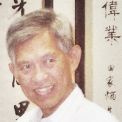
- The takeover of Tin's Chemicals by second generation
Tin Ka Ping had focused on industrial building development since 1974, and had gradually handed over the factory operations to Sam Tin. Back in 1965, Tin’s already bought lots of land in Kwun Tong and Kwai Chung for developing industrial buildings and thus strengthening their financial status. The second generation had solid professional knowledge and helped Tin’s to survive in the new era by improving product quality. When first joining Tin’s, Sam Tin devoted himself in the technical area and had lesser participation in the managerial and financial areas. The second generation of Tin’s was faced with more new situations, e.g. lack of labour, new opportunities presented by the mainland and transformation of the family’s business. Sam Tin gradually took more consideration on the overall strategy of Tin’s and paid more attention to market trends, product design, etc.
Here is a comparison between the first and second generations: Tin Ka Ping, the founder, was an entrepreneur of great enterprise. He was bold in developing new businesses, e.g. switching to the PVC business and borrowing from banks for building factories. Sam Tin deemed himself a keeper of developed businesses faced with the need to enhance production technology, empower management and compete with new rivals. When he first joined Tin’s, Tin’s was still in the establishment stage. The Pingshan Factory then was only 60,000 sq. ft., and productions lines were expanded gradually. Since the 1970s, Sam Tin had kept visiting exhibitions held for the same trade in Germany and Japan with a view of acquiring advanced overseas technology. Since he took over, he had been introducing new equipment which relieved the dependence on personal experiences, and had been fostering production automation and systematization.
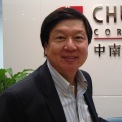
- Succession of the second generation (1): Expanding European-US Market and inviting talents
Knowing that Chung Nam needed successors, Chong Hok Hoi decided to join the family business upon graduation. Initially, he was involved in sales and marketing, accompanying sales colleagues on regular trips to Southeast Asia, Middle East, Europe and U.S.A. As Chung Nam had already built a good reputation in the industry in the 1960s, Chong Hok Hoi felt he wouldn’t face much difficulty if he agreed to succeed the business. In the early 1980s, the company’s business took off and both workforce and production volume constantly increased over the years. In the beginning, Chong Ching Um spent more time developing Southeast Asian markets. As there were language and communication barriers, he remained reliant on intermediaries to explore European and U.S. orders. After Chong Hok Hoi and his elder brother, Chong Hok Shan, took over the business in the late 1970s, they were able to deal directly with European and U.S. clients as both had studied overseas and spoke fluent English. Recalling changes in communication modes, Chong Hok Hoi said Chung Nam had used different channels such as telexes, IDD telephone calls, faxes and e-mail.
When Chong Hok Hoi first joined the company, Chung Nam was a typical family business. There were many senior staff including a factory head manager who had been with the company for 62 years, and all shareholders were family members. In his role as founding president of the Chiu On Association, Chong Ching Um always helped his folks with employment opportunities. Before being wholly succeeded by the second generation, all company employees were Chinese. In the early days, people engaged in the watch industry came from different hometowns and quite a number of them were from Shanghai. After the war, Cantonese and Chaozhou people began to join them. After the Chong brothers took over Chung Nam, the company start to recruit talent from overseas to supplement its old staff in coping with expansion. The introduction of private equity funds in the 1990s saw the setting up of more joint ventures and the recruitment of non-family members as shareholders.
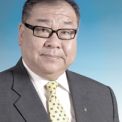
- Innovations made by second-generation: product research and management culture
KL Sun explained how the second generation ran Kin Hip differently from their predecessor from two perspectives: product research and management culture.
(1) Product research: Sun Kin Chao relied on his own insights and judgments when introducing new products, which tended to be more profitable given the larger market and less competition in the early period. Sun Kin Chao often hung around in department stores, outlets and shopping malls to observe the different models of products available in the market. He then modified them in his own products. In 1970, with reference to two models of charcoal grill, Sun Kin Chao took advantage of their good ventilating and soot fending power and introduced a double-tray charcoal grill which sold well and remained popular till now. At the time of the handover to the second generation, the market differed from that of the 1950s and 60s. KL Sun put a great emphasis on market research and data analysis. He would never proceed to tooling and prototyping without adequate customer feedback. Recently Kin Hip introduced a cold drink cup equipped with an ice column, which could prevent lemonades from warming up again or the need for ice cubes. This product was a smash in the market. Since 1984, Sun Kin Chao had faded out of the operation of Kin Hip, yet he kept thinking about new products and occasionally inspected the factory to offer advice.
(2) Management culture: Sun Kin Chao adopted a paternalistic approach in management and made decisions with personal judgments. His subordinates, for the most part, were awed by his authoritativeness. His successor KL Sun decentralized management and involved senior staff members in the decision making process. He was revered rather than feared by his subordinates. When he first returned to Hong Kong for the succession, he spent most of his time in the workshop, urging the workers to work with enthusiasm. Now he had lessened his involvement in daily operation to facilitate the gradual participation by the third generation. KL Sun believed that he played a technical and managerial role, and was more devoted to the policy and strategy of the enterprise comparing with the first generation.
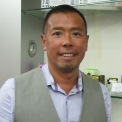
- How Hoe Hin leveraged product quality, sales channels and brand image strategies to make Pak Fah ...
Keeping products looking and feeling young remains Gan Fock Wai’s core principle in developing Hoe Hin’s products to this day. In his early days, Gan Fock Wai had developed some new products, but none was very successful. As a result, he thought that prolonging the life of existing products was a far more solid foundation for the future than investing a lot of resources in developing new and therefore untried products. In addition to promoting the image of Hoe Hin’s brands and establishing stable sales channels, Gan Fock Wai set out to raise the standard of the company’s entire production process. His aim was to ensure a good product quality that would prolong the life of both the company and its products.
When it came to sales channels, Hoe Hin used to have eight wholesalers who directly distributed its products in the local market. As a result, the company earned more profits because it did not have to pay intermediaries. Each of these wholesalers was a large pharmacy. Many of them had ceased operation when the proprietors grew old. Today, only a few like Chung Ching Dispensary are still operating. Hoe Hin now uses DKSH Hong Kong Limited (DKSH) as its sole distributor locally. Gan Fock Wai felt that DKSH worked well and had developed a successful, comprehensive marketing strategy for Hoe Hin products. With the markets changing over the time, there are now a variety of outlets selling medicines in Hong Kong. Apart from drug stores, people could buy medicines from supermarkets, convenience stores and personal care shops. It is difficult for Hoe Hin to manage different types of sales outlets and not efficient to rely on a number of distributors. It has now become much simpler and easier to let a single distributor to manage the entire sales operation. As a result, although DKSH’s distribution charged higher costs for marketing, it remains more cost-effective for Hoe Hin to use them to handle the local distribution of its products.
Hoe Hin’s sales network in Hong Kong has always been comprehensive and its distribution strategy continues to be based on the interests of both large and smaller-sized chain stores, pharmacies and herbal shops. In doing so, the company has been careful to avoid letting a few merchants monopolise the sales ofPak Fah Yeow products. Gan Fock Wai says that the company wants shops and pharmacies of whatever size could survive and sell Hoe Hin products. Aside from large chain stores, Hoe Hin’s distributor must also take care of pharmacies of every size. Hoe Hin carefully controls the sales ratio at specific sales outlets and has in place different strategies to balance them out in cases some larger stores exceed the set percentage.
With regard to the brand image, Hoe Hin has long used different promotion methods such as aromatherapy, celebrity endorsers, music and medicinal functions. The company recently launched a trailblazing series of “Go! Go! Go!”-themed ads that show its products’ wide range of applications among users of different nationalities. Hoe Hin also continues to use various products to sponsor different functions such as Cantonese operas, operas, young people's concerts, sports, online games, product expos and charity events. The use of a variety of promotional media ensures that each type of Hoe Hin products image can reach every level of society. Music is often used to make brands look and feel more appealing to younger consumers. Gan Fock Wai himself was a keen singer and contributed vocals to songs such as “Go Fly” and “Love 80 Years More” that won Hoe Hin’s image a place in the hearts of a younger target audience. His efforts proved so successful that even primary school students knew how to sing “Love 80 Years More”! When he recently gave a series of talks at local universities, Gan Fock Wai was delighted to find that university students still loved Hoe Hin products. In addition to Pak Fah Yeow, the students’ top favourites included “Fuzai 239”. At the other end of the age scale, Hoe Hin is tackling the many problems old folks face with their joints by launching the targeted Hoe Hin Strain Relief product.
In the past, Hoe Hin’s overseas marketing was done by the local agents there. As each agent promotes Hoe Hin in different ways, Hoe Hin products had different images in different markets. Hoe Hin now requires that local agents had to adopt the Hong Kong approach with a few local features in designing the promotion and advertising plans. When marketing overseas, Hoe Hin has always stressed that its products are manufactured here in Hong Kong, to gain users’ confidence of the source of ingredients. In addition, Hoe Hin is also concerned about brand image. While Hoe Hin products in more mature markets such as the US and Canada are not considered expensive, they are viewed as being pricy, high-end goods in developing countries such as China and other Southeast Asian countries. Gan Fock Wai has always believed that a brand represents the value of a product. A product with a history has higher value. This is especially true to Chinese pharmaceutical products because a long history means the brands are effective and safe and the company who makes them is trustworthy and reliable. Besides drug resistance seldom happens to products made from well established formulas. For Chinese pharmaceutical products with a long history like Pak Fah Yeow, they were sold at a higher price than newer brands.
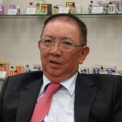
- How Gan Wee Sean integrated himself into the company
Gan started from the bottom and learnt almost every aspect of the business. Gan went to the factory to formulate the oil. From around 1978 onwards, Gan’s grandfather fell ill and Gan gradually took over the business. The factory delivered the orders via a transportation company whenever the distributors placed orders. The products were also exported to Thailand (since the 1960s), the U.S. (since the 1980s), Australia (since the 1990s), and other parts in the South East Asia, but the Hong Kong market was always the biggest share. The company also received orders from the Philippines where they set up a packaging plug doing bottling and packaging. In the Philippines, the company could enjoy lower import duty If only semi-finished products were imported.
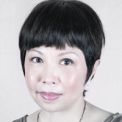
- Conflict and accommodation during second-generation takeover. Finding big customers: K-Mart and ...
When Lau Tik Wah joined Champion Industrial Co. Ltd., her father intended to appoint her as a secretary. Hoping to work in design and in management to formulate the company’s plans, she refused the offer. So her father made her his personal assistant and brought her along to meet clients. The title on her business card was Assistant to Managing Director. Lau Tik Wah took the initiative to go to different departments and learn about the works of different positions. At the beginning, there was much friction between Lau Tik Wah and the senior company staff because she, as someone who studied in the USA, disliked complacency and wanted to improve business results through raising product quality and workplace efficiency. The senior staff thought she was being pompous and derided her ability to take over her father’s business. There were a lot of conflicts.
In the mid-1970s, Champion received a large number of orders from K-Mart and Avon, among other American companies. Emphasis was on quantity, and the company lacked the propulsion to advance its product quality. Lau Tik Wah believed in the importance of quality in order for the company to stand out in times of economic downturn. Her motto was ‘either sink or swim’. Mr. Kong, a major stockholder of the company, was in charge of the company’s funds and did not involve himself much in the daily operation. A lot of staff was either his old classmates or relatives. Mr. Kong himself was kind to others and was not very willing to sack those staff members who were lazy and who neglected their duties.
When Lau Tik Wah first joined the company, she often lost her temper and quarrelled with the factory managers. She would threaten to leave her job because her father wouldn’t fire the workers who escaped from work. But Lau Tik Wah made vital contribution to the company by setting up deals with American client such as Avon and bringing great profit.Avon’s main products were cosmetics, jewellery, purse and handbags. I983 was the best year for Champion as Avon ordered three million wallets from them. Lau Bin believed that his daughter was brilliant and capable of contributing to the company, therefore he gradually accepted her reform suggestions. At the same time, Lau Tik Wah went to different departments and learnt from more senior colleagues and workers, regardless of their differences in rank. She quickly understood the processes and works of different kinds. This gradually earned her recognition from other colleagues. Coming from an industrial family, she had leant sewing skills from her mother since a young age. Her wish was to go into fashion design. She passionately took part in the company’s operation, while her liberal and forward-thinking father was happy to give her room for development.
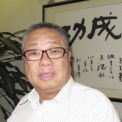
- Participation in Asian-European textile. Intriguing experiences of setting up plants in undevelop...
In the 1970s, Europe and the USA imposed import quotas on Asian garments. Faced with the impacts on trade caused by quotas, Yangtzekiang Garment Mfrs increased the production of high-end garments and exported suits, which were not restricted by the quota system. At the same time they set up plants in countries unrestricted by quotas. Since the 1970s, Yangtzekiang Garment Mfrs had set up plants in Macau, Singapore, Malaysia, Burma, Sri Lanka, Cambodia, Bangladesh, India, Taiwan, Lesotho, etc. The Chan family had their members stationed in different plants for management. Whenever a quota negotiation was initiated between an Asian and a European country, all the family members would seize the chance to participate in the international trading conference as a consultant for the country they were stationed in. WK Chan jokingly said that the quota negotiations were but their family meetings. In the early 1980s, a conference was convened in Brussels, which Chan Sui Kau, Chan Wing Kee and Chan Wing To attended on behalf of Hong Kong, Macau and Singapore/Malaysia respectively. Cheng Wai Chee and Cheng Wai Keung from Wintech Textiles Ltd. also attended as representatives of Hong Kong and Singapore/Malaysia respectively. In those days many of the manufacturers were Shanghaies who loved hairy crabs. Hairy crabs were then introduced in Brussels. The quota problem had been relieved since WTO replaced GATT in the early 1990s, the latter of which was a conference organization in the period from the 1970s and 1980s. Yangtzekiang Garment Mfrs’ prime concerns were transport network, labour supply and transparency of the legal system when setting plants outside Hong Kong. Given that Hong Kong was a British colony, it preferred setting up plants in areas with much US or British influence to take advantage of their parallel and comprehensible legal systems. They once invested in former British colonies such as Singapore, Malaysia, Burma, Sri Lanka, India and Bangladesh, and visited Central South America, which was under US control, to conduct inspections. The company gathered investment information from different agents such as TDC, KPMG and British banks. Banks played a particularly important role for them. For instance, assistance was rendered by British banks when the company set up plants in Bangladesh. Thanks to British colonisation, British banks such as HSBC and Standard Chartered Bank had extensive networks in British colonies or overseas territories. They could refer potential local partners to Hong Kong manufacturers, which, upon successful referrals, brought tremendous businesses to the banks. To WK Chan, TDC was important for the company in expanding their business. An expatriate staff member of TDC’s Italy office had been employed by Yangtzekiang Garment Mfrs. He had worked in Yangtzekiang Garment Mfrs’s office in Italy and their plant in Sri Lanka. WK Chan once looked for sites for setting up plants for the company all around the world. Many undeveloped countries became his eye-openers. He said that such experiences were intriguing and memorable ones. He once travelled to India for negotiations on plant setup, and was planning to have an inspection in a small town on the Indian-Pakistani border called Lydia. On the way, he stayed overnight in a small town called Bujj, where city walls were still erected. The inn he stayed in had a stable on the ground floor. WK Chan sighed that it was like going back to the times of the Bible to do business in remote towns. In the 1980s, he went for an inspection in Costa Rica. Her neighbouring country, Nicaragua, was suffering from a civil war. Leftist guerrilla groups were everywhere and WK Chan was constantly threatened by kidnapping. He had had all sorts of hardships when setting up plants in Mainland. At that time, the Chan family were already running a plant in Taiwan. They did not want the Taiwanese authorities to smell their investments in Mainland. So, WK Chan had to first leave Hong Kong for Macau, where he crossed the border onto the Mainland and arrived at Wuxi via Guangzhou and Shanghai. The roundabout single trip took 3 nights and 4 days, which was the same for the return trip. Transport in Mainland was undeveloped in the early years. Even a trip to attend the Canton Fair (China Import and Export Fair) in Guangzhou would mean exhausting travelling and poor living conditions. He missed Shiqi’s and Daliang’s delicacies though. The trips he made in his young days were his sweetest memories.
Copyright © 2012 Hong Kong Memory. All rights reserved.
| Set Name |





